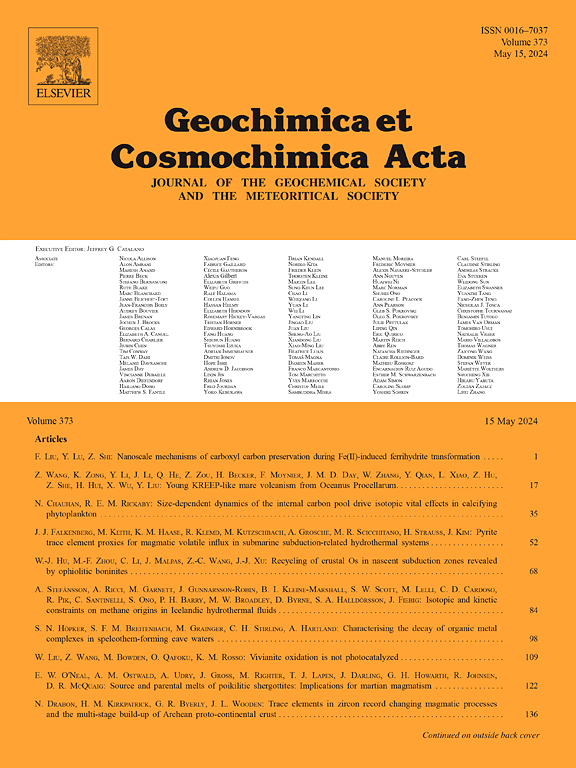Ultra-fast metamorphic reaction during regional metamorphism
IF 4.5
1区 地球科学
Q1 GEOCHEMISTRY & GEOPHYSICS
引用次数: 0
Abstract
Constraining the timescales of metamorphic processes is critical to understanding geodynamics on Earth. It is generally accepted that the rates of metamorphic reactions in regional metamorphism, where fluids are limited or transient, are several orders of magnitude slower than in laboratory experiments. This discrepancy is attributed to several rate-limiting mechanisms affecting metamorphic reactions in natural settings, such as differences in the reactive surface area of the reactants, the magnitude of the driving force for reaction, rates of inter-granular transport and possible fluid content. Here we report an ultra-fast metamorphic reaction within a year, constrained by diffusion modeling on frozen-in chemical gradients of trace elements preserved in metamorphic garnet across a partially melted corona texture. The growth of peritectic garnet occurred in the presence of a melt phase, which distributed along the grain boundaries. The observed chemical gradient of HREE+Y in garnets is interpreted to have formed due to trace element diffusion in the inter-granular melt, recorded by the simultaneous growth of multiple garnet grains across the corona texture. A diffusion model using a fixed boundary condition suggests a timescale of 8.4 (+5.4/-3.3) days for the formation of this corona texture, whereas a moving boundary model provides a slightly longer timescale of less than a year. These timescales are much shorter than those previously obtained from regional metamorphism in nature, but are similar to contact metamorphism in nature and laboratory-based results. Based on these findings, we propose that ultra-fast pulses of metamorphic reactions occur in nature under fluid/melt-present conditions, as elemental diffusion and mass transport in an aqueous fluid or melt are significantly faster than those in mineral lattices and anhydrous grain boundaries. However, rapid metamorphic reactions are difficult to identify due to the insufficient temporal resolution of radioisotope dating and the poor preservation of chemical gradients during subsequent metamorphic reactions.
求助全文
约1分钟内获得全文
求助全文
来源期刊

Geochimica et Cosmochimica Acta
地学-地球化学与地球物理
CiteScore
9.60
自引率
14.00%
发文量
437
审稿时长
6 months
期刊介绍:
Geochimica et Cosmochimica Acta publishes research papers in a wide range of subjects in terrestrial geochemistry, meteoritics, and planetary geochemistry. The scope of the journal includes:
1). Physical chemistry of gases, aqueous solutions, glasses, and crystalline solids
2). Igneous and metamorphic petrology
3). Chemical processes in the atmosphere, hydrosphere, biosphere, and lithosphere of the Earth
4). Organic geochemistry
5). Isotope geochemistry
6). Meteoritics and meteorite impacts
7). Lunar science; and
8). Planetary geochemistry.
 求助内容:
求助内容: 应助结果提醒方式:
应助结果提醒方式:


